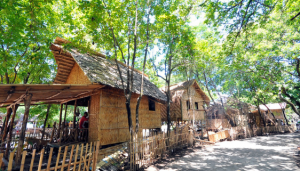A PHYSICIAN at Southern Philippines Medical Center (SPMC) warned the public against being complacent when experiencing flu-like symptoms as they could lead to Mycoplasma pneumonia.

SPMC Dept. of Internal Medicine Dr. Hakan Oztemiz said despite being tagged as “walking pneumonia” requiring no hospitalization, it does not mean zero health risks.
Mycoplasma pneumonia is an infection caused by Mycoplasma pneumoniae with common symptoms likened to flu such as fever, cough, bronchitis, sore throat, headache, and fatigue.
“If ever you have flu-like symptoms, such as runny nose, cough, colds, sore throat, and fever, and if there are no signs of improvement for a week, better to undergo check-up as soon as possible,” he said during the Kapihan sa PIA, Monday, Dec. 18.
Mycoplasma infection symptoms normally can be felt and may range up to two to three weeks from exposure.
The infection can be treated with antibiotics such as erythromycin, clarithromycin, or azithromycin. However, antibiotic treatment is not necessary as it may be resolved on its own.
Oztemiz said patients aged 18 and below are susceptible to the illness as they have an underdeveloped immune system. It does not excuse the elderly and people with comorbidities like asthma.
The doctor said there is a low rate of people in SPMC with the bacteria as doctors do not usually look for it, unlike typical pneumonia.
He added that diagnosing Mycoplasma pneumoniae is difficult as it requires expensive diagnostic tools. However, SPMC treats this case as no different from the typical.
“Usually, what we do is we treat the patient and if he does not need hospitalization, we will discharge him, and if he does not improve for 2-3 days, we will further investigate and most of the time, usually we can’t detect mycoplasma,” the doctor added.
At present, SPMC does not have a surge in the number of pneumonia cases but Oztemiz advised practicing proper hygiene and covering the nose and mouth when coughing or sneezing to contamination.



